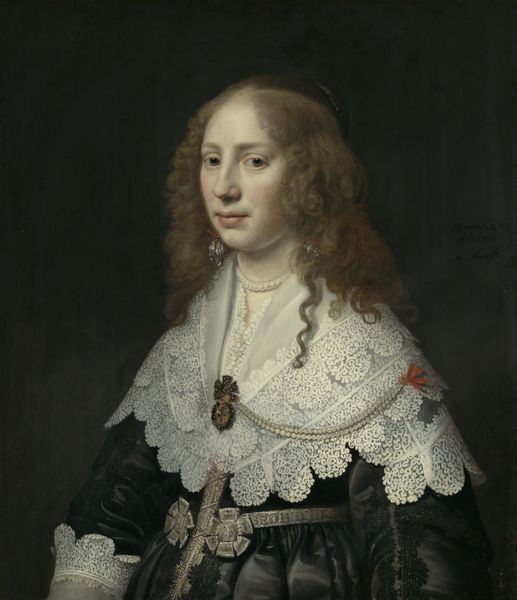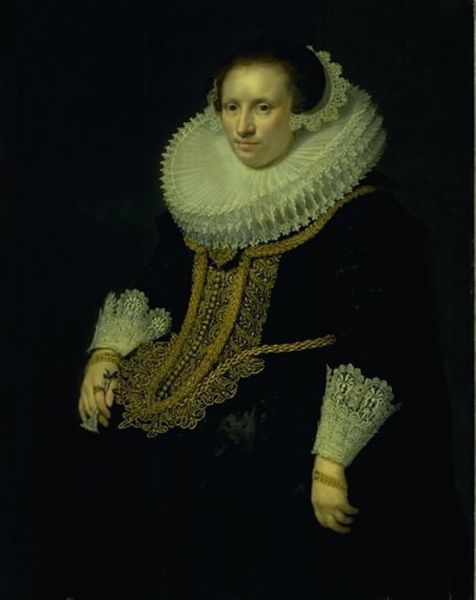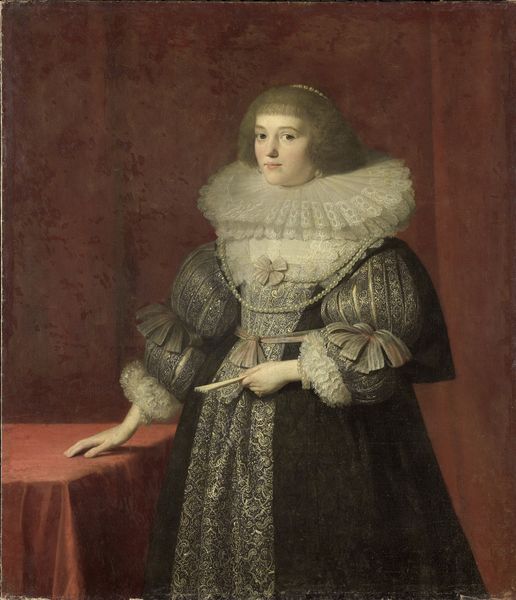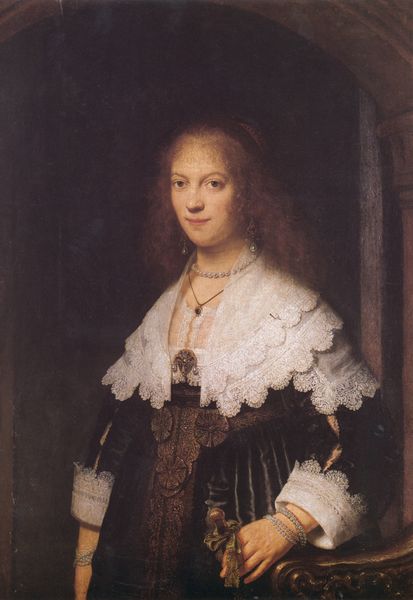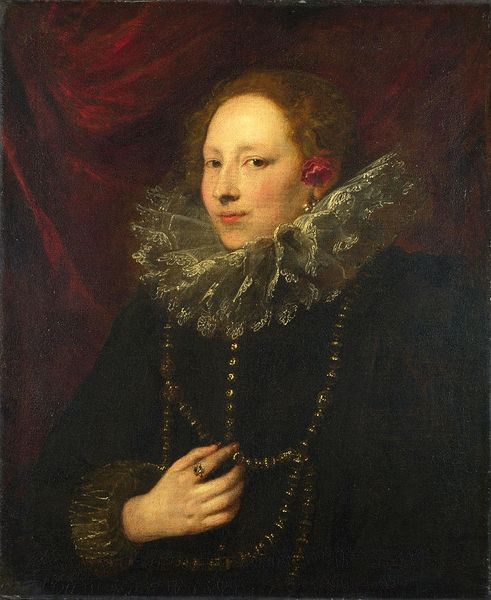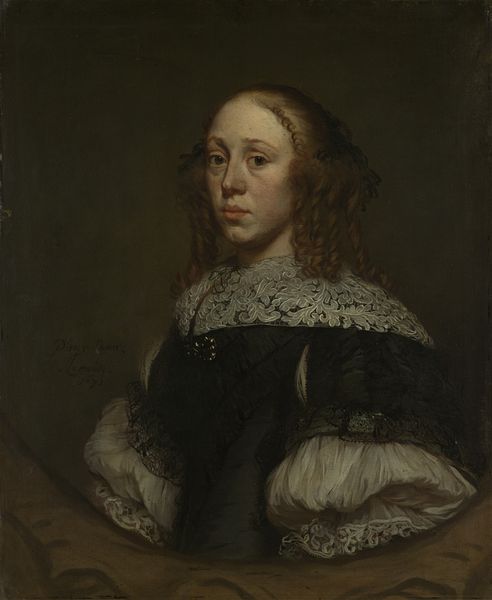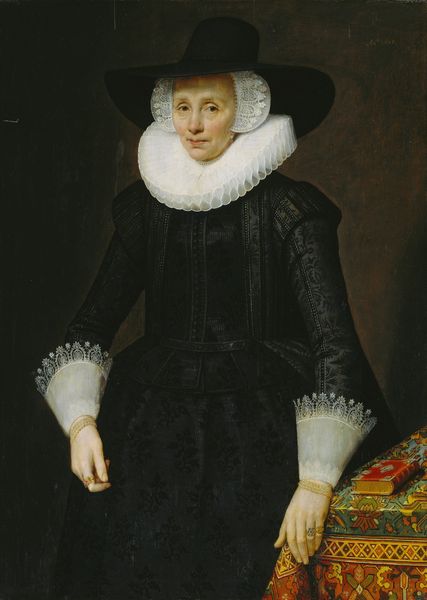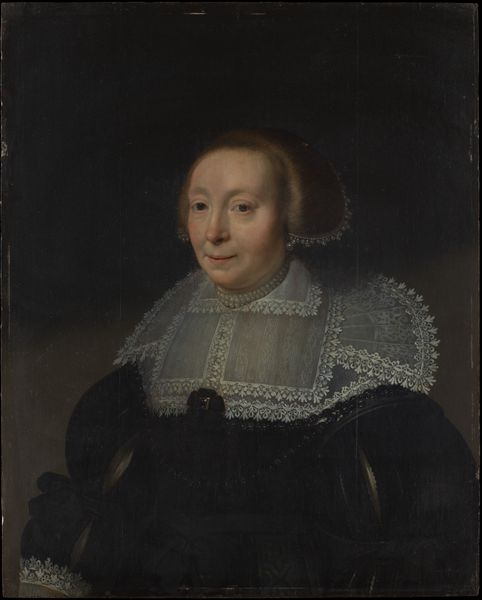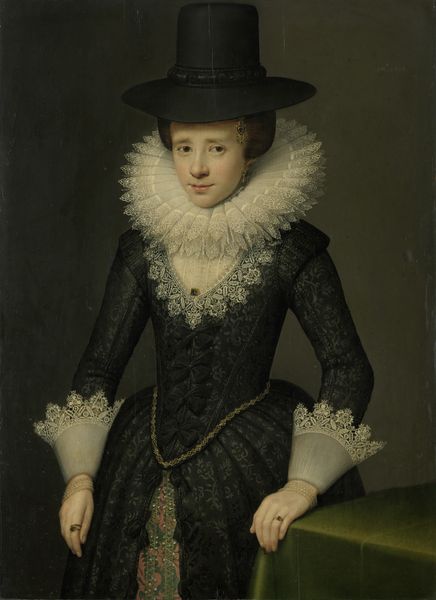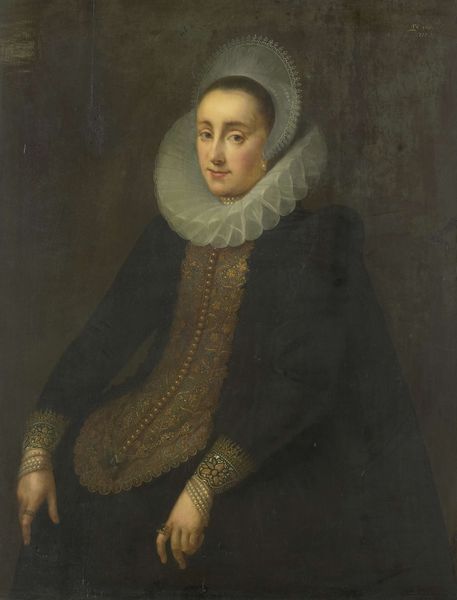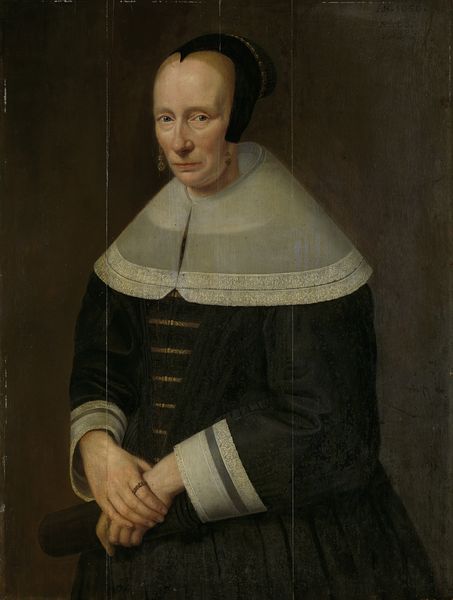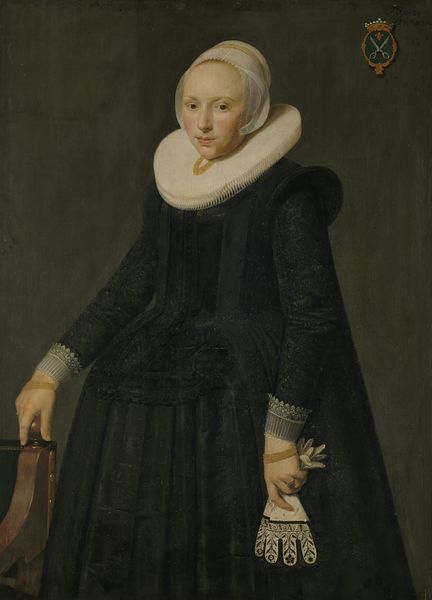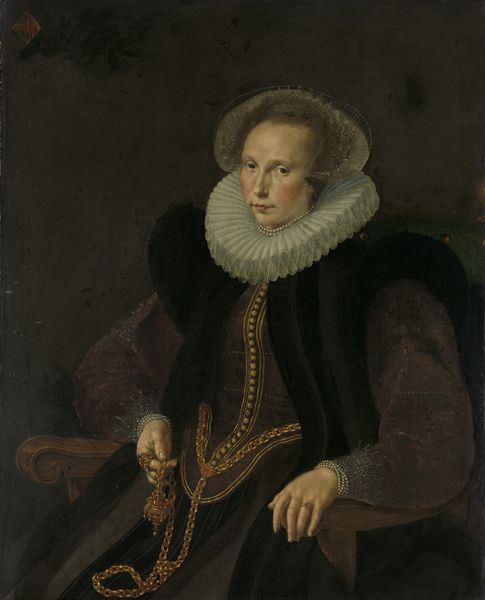
Agatha Geelvinck (1617-38). First wife of Frederik Dircksz Alewijn 1637 - 1640
0:00
0:00
painting, oil-paint
#
portrait
#
baroque
#
dutch-golden-age
#
painting
#
oil-paint
Dimensions: height 72 cm, width 61 cm, depth 3 cm
Copyright: Rijks Museum: Open Domain
Editor: Here we have a portrait of Agatha Geelvinck, painted sometime between 1637 and 1640 by Dirck Dircksz. van Santvoort using oil paints. She appears young and somewhat fragile; the detail in her lace collar is incredible. What catches your eye about this piece? Curator: Immediately, I see a visual encoding of power and societal constraints. This portrait isn't simply an aesthetic representation; it's a document reflecting the social and economic structures of the Dutch Golden Age. Agatha's elaborate collar speaks volumes about her family's wealth and status. How do you think women’s identities were constructed and reinforced by these visual markers of status? Editor: I hadn't thought about the collar as an explicit symbol. It definitely hints at privilege but also maybe restriction? It seems almost like a cage. Curator: Precisely. These adornments were both symbols of status and instruments of control. Think about the physical limitations imposed by such elaborate clothing. Now consider the societal expectations surrounding women of her class during that era. Does the dark background also speak to that? Editor: It does create a sense of isolation, almost like she's separated from the world. Do you think the artist was making a statement, or was he simply reflecting the norms of the time? Curator: That's the crucial question, isn't it? Artists often operate within the confines of their social context, but even within those constraints, there's room for subtle commentary. Perhaps van Santvoort is inviting us to consider the complex reality of women's lives. Considering that the subject died around the age of 21, what implications do we see in her depiction as a youthful yet restrained image? Editor: It is really interesting to look beyond the surface and consider the historical implications. I'll never look at a Baroque portrait the same way again. Curator: I am glad. Understanding the intersections of identity, class, and representation provides a much more nuanced appreciation of art history.
Comments
No comments
Be the first to comment and join the conversation on the ultimate creative platform.
